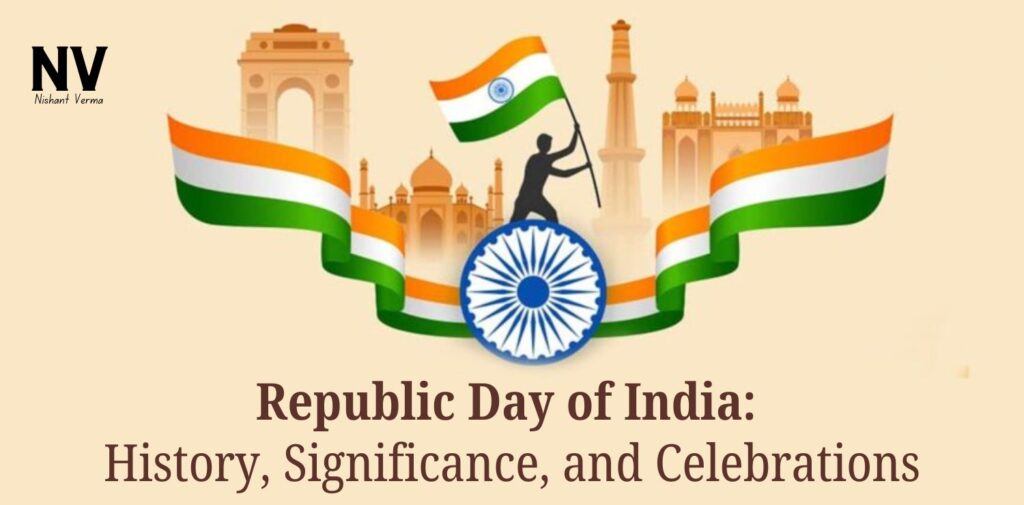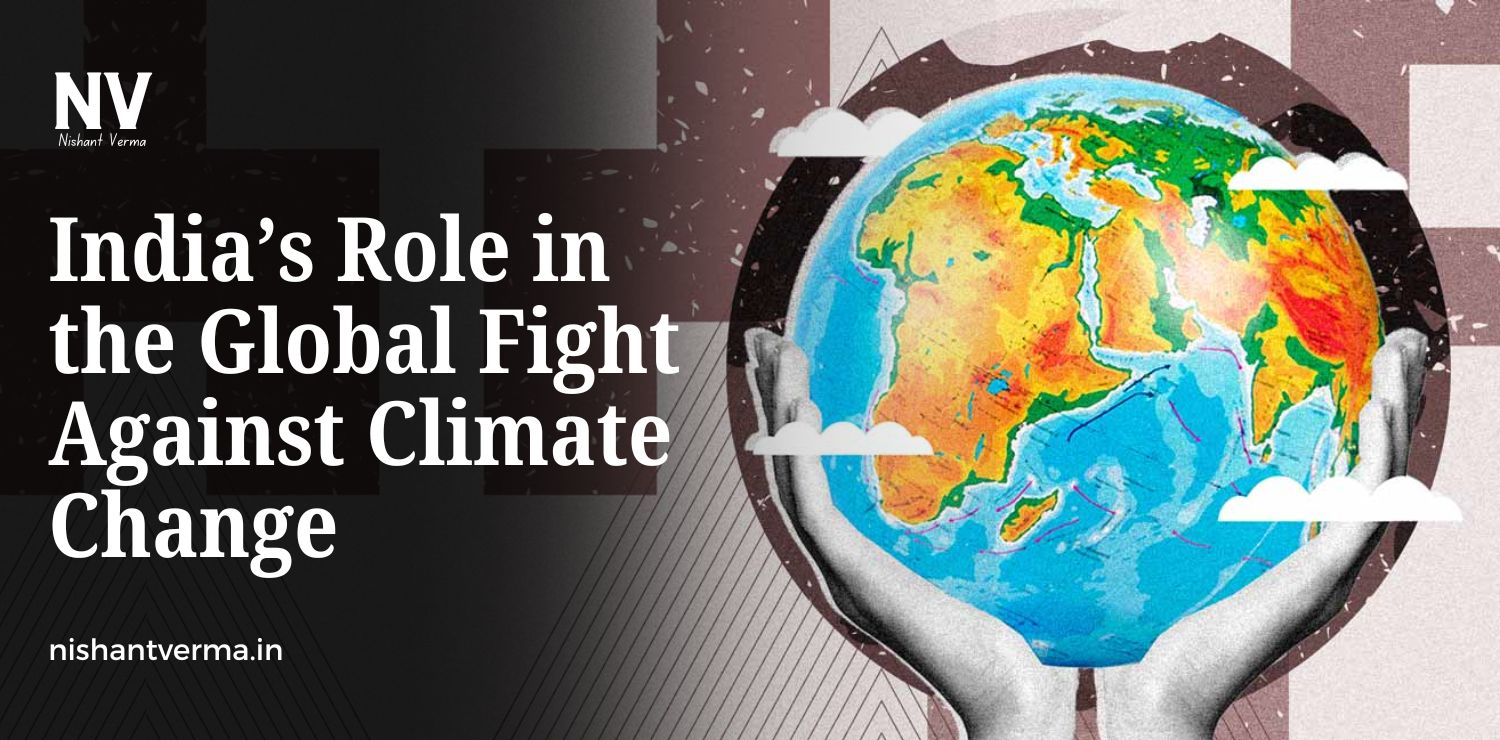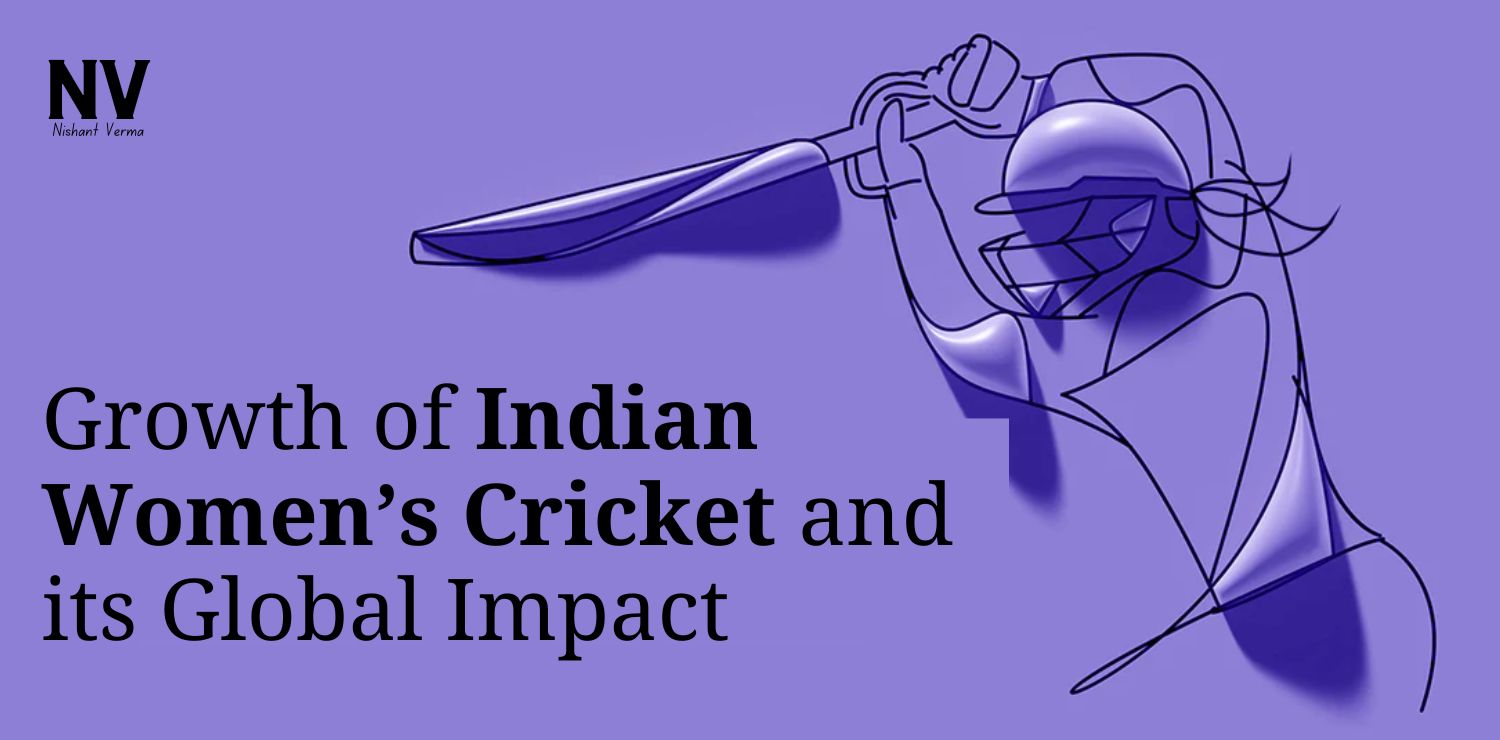Republic Day is one of the most important national festivals in India. Celebrated every year on January 26th, it marks the day when the Constitution of India came into effect in 1950, turning India into a republic. While Independence Day on August 15th celebrates India’s freedom from British rule, Republic Day celebrates the adoption of the Constitution, which made India a fully self-governed country. It is a day of national pride, unity, and reflection on the country’s achievements and challenges.
In this article, we will explore the history behind Republic Day, why it is celebrated, how it is observed, and why it holds a special place in the hearts of all Indians.
The History of Republic Day
To fully understand the importance of Republic Day, we must look at India’s journey to becoming a republic.
India’s Struggle for Independence:
For almost two centuries, India was under British colonial rule. During this time, the British controlled India’s politics, economy, and resources, which led to widespread exploitation. However, the spirit of resistance was always alive among the Indian people. Leaders like Mahatma Gandhi, Jawaharlal Nehru, Sardar Patel, Subhas Chandra Bose, and many others played key roles in the freedom struggle, fighting for India’s independence.
India gained independence from British rule on August 15, 1947. While this was a significant milestone, India did not have a permanent Constitution at the time. The laws governing the country were those of the British colonial administration, and India continued to be a dominion under the British crown with the British monarch still acting as the head of state.

The Need for a Constitution:
After independence, it became clear that India needed a Constitution to guide the country’s future and define the relationship between the government and the citizens. A Constitution would ensure that the values of democracy, equality, and justice were respected, and that the rights and freedoms of the people were protected.
A Constituent Assembly was formed to draft the Constitution, which was tasked with creating a framework for India’s government. This assembly included some of the most visionary leaders of India, such as Dr. B.R. Ambedkar, who is often called the chief architect of the Indian Constitution. The drafting of the Constitution took almost three years, from 1947 to 1950, and involved careful deliberations and discussions to ensure that it reflected the values and aspirations of the Indian people.
Adoption of the Constitution:
On January 26, 1950, the Constitution of India came into effect, making India a republic. On this day, the country’s governance transitioned from a British dominion to a fully independent republic with a democratic system of government. Dr. Rajendra Prasad became the first President of India, and India adopted its first official Constitution, which laid down the fundamental principles of the nation and defined the rights and responsibilities of its citizens.
The date, January 26, was chosen for a reason. On this day in 1930, the Indian National Congress had declared India’s complete independence from British rule (Purna Swaraj). By choosing January 26 as the date for the adoption of the Constitution, the leaders of the newly independent nation honored the spirit of the struggle for independence and the goal of self-rule.
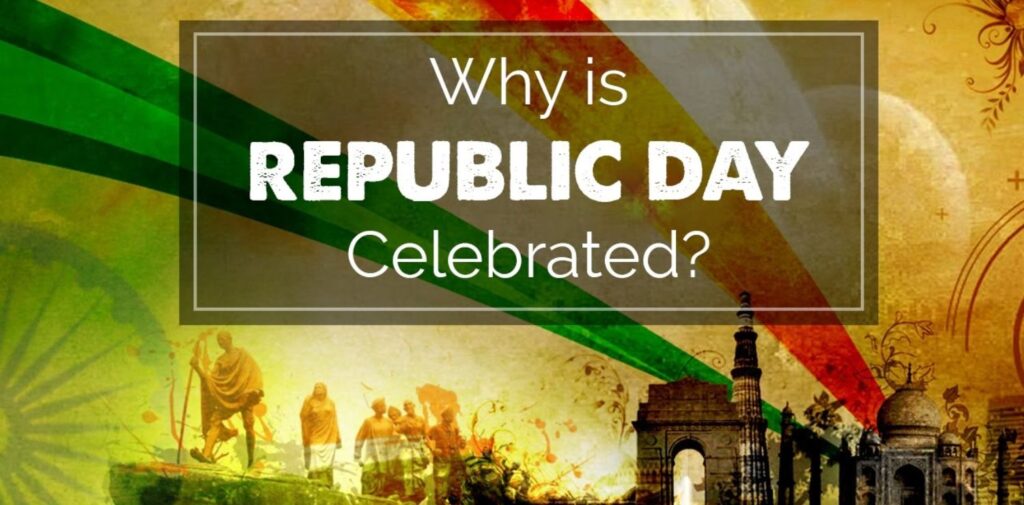
Why Republic Day is Celebrated
Republic Day is celebrated to honor the adoption of the Constitution of India and to remember the struggle for freedom and self-rule. It is a day that marks the birth of India as a republic, with its own system of government and its own laws that protect the rights and freedoms of every citizen.
Key Reasons for Celebrating Republic Day:
- Honoring the Constitution: Republic Day is a celebration of the Constitution, which guarantees fundamental rights to all citizens and establishes the principles of justice, equality, and freedom. It serves as a reminder of the importance of the Constitution and its role in shaping India’s democracy.
- Commemorating India’s Journey to Republic: Republic Day reminds us of India’s long journey from colonial rule to becoming an independent republic. The adoption of the Constitution marked the final step in India’s quest for complete independence.
- Promoting Patriotism: Republic Day fosters a sense of pride and patriotism among the people of India. It is a time to remember the sacrifices made by freedom fighters and to reflect on the progress the country has made.
- Unity in Diversity: India is known for its diverse cultures, languages, religions, and traditions. Republic Day celebrates this diversity and reminds citizens of the unity that binds them together as one nation. It is a time to celebrate the strength that comes from embracing diversity.
- Respecting National Heroes: Republic Day is also an occasion to remember and honor the leaders and freedom fighters who played a crucial role in India’s independence. Many of them laid down their lives to ensure that future generations would live in a free and democratic country.
How Republic Day is Celebrated
Republic Day is celebrated across India with great enthusiasm and patriotism. The celebrations are marked by various events and activities that highlight India’s culture, history, and achievements.
The Republic Day Parade:
One of the most significant events on Republic Day is the grand parade held in the national capital, New Delhi. The parade takes place on Rajpath, a major avenue in the heart of the city. The parade begins at the Rashtrapati Bhavan (the President’s residence) and moves towards India Gate, with the President of India, who is the chief guest, overseeing the ceremony.
The parade showcases India’s military strength, with contingents from the Indian Army, Navy, and Air Force marching in perfect synchrony. The armed forces display their discipline and strength, and various military equipment such as tanks, missiles, and aircraft are shown, symbolizing India’s defense capabilities.
Alongside the military display, the parade also includes cultural performances that showcase India’s rich heritage. Dancers, artists, and schoolchildren from all over the country participate, presenting performances that highlight the diversity of Indian culture. The colorful tableaux representing different states and regions of India are another highlight, each tableau displaying the unique traditions and customs of the state it represents.
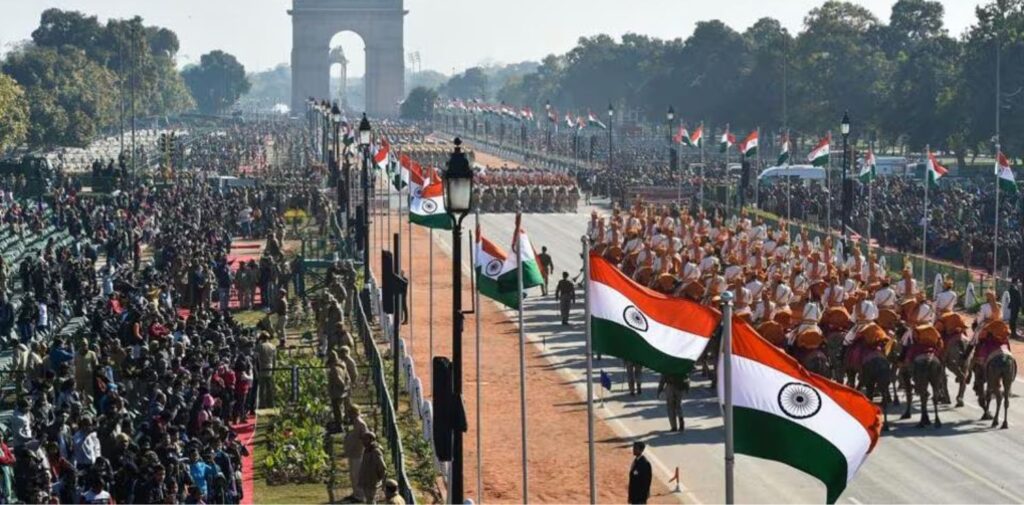
Flag Hoisting and National Anthem:
Republic Day celebrations begin with the hoisting of the national flag. The President of India hoists the flag at the main ceremony in New Delhi, while in every state, district, and school across the country, the national flag is hoisted by local leaders. This is followed by the singing of the national anthem, “Jana Gana Mana,” in unison, as people stand together in respect for the nation.
Awards and Honors:
During the Republic Day celebrations, the President of India presents several prestigious awards, including the Padma Awards (Padma Bhushan, Padma Vibhushan, Padma Shri) to individuals who have made significant contributions in fields such as literature, arts, sports, social service, and public life. These awards are given to people who have made a positive impact on society and serve as role models for others.
Celebrations Across India:
While the grand parade in New Delhi takes center stage, Republic Day is celebrated all over the country. Each state organizes its own events, including flag hoisting, parades, and cultural performances. Schools and colleges hold special programs where students participate in various activities such as singing patriotic songs, giving speeches, and performing plays that highlight India’s freedom struggle and its achievements.
In Rural Areas:
In rural areas, Republic Day is celebrated with great enthusiasm as well. People gather at local community centers, schools, and village squares to mark the occasion with flag hoisting, music, and dance. It is a day when people come together, irrespective of their backgrounds, to celebrate their common identity as Indians.
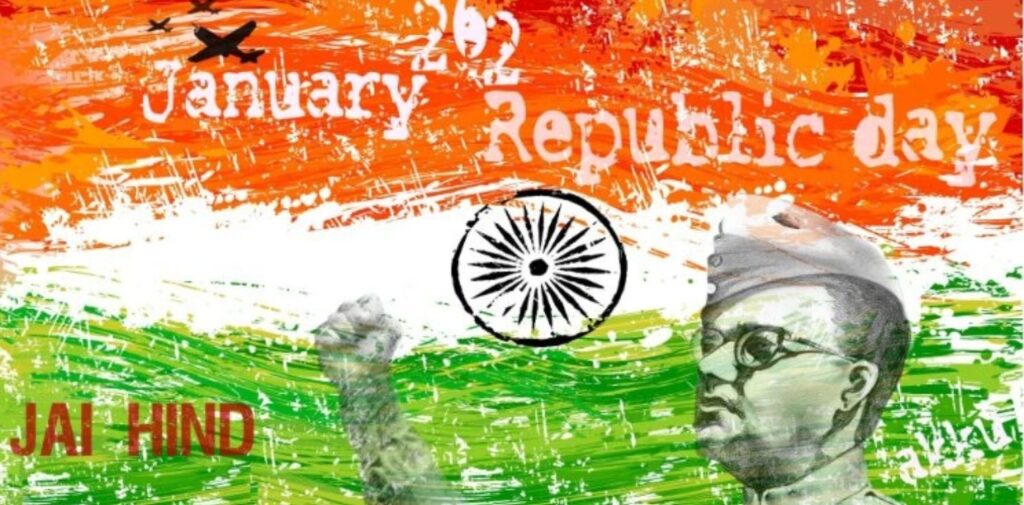
The Importance of Republic Day
Republic Day is a day that reminds every Indian of the sacrifices made by the freedom fighters and the values that form the foundation of the nation. It highlights the importance of democracy, justice, and equality, and serves as an occasion to renew our commitment to these principles.
It is also a day for introspection and reflection on how far the nation has come and the challenges it still faces. India, as the world’s largest democracy, continues to grow and evolve, and Republic Day reminds citizens of their responsibility to contribute to the nation’s progress.
Conclusion
Republic Day is not just a celebration of India’s Constitution; it is a celebration of the ideals of freedom, equality, and justice that the Constitution upholds. It is a reminder of the unity in diversity that defines India and a call to every citizen to contribute to the nation’s growth and well-being. As we celebrate Republic Day, let us honor the legacy of those who fought for India’s independence and take pride in the democratic values that make India a strong and vibrant nation.
Happy Republic Day to all!

